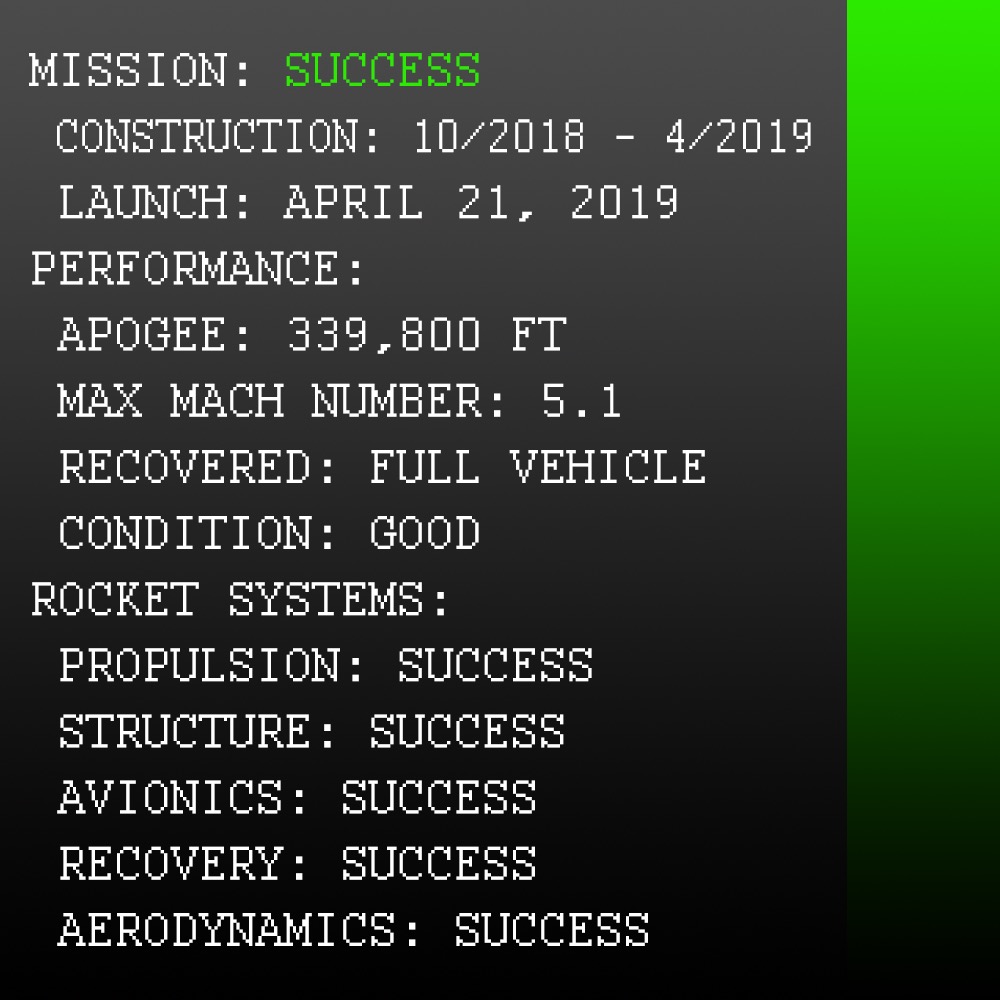MISSION SUMMARY
Traveler IV was a 8 inch diameter vehicle launched in the spring of 2019 out of Spaceport America. The vehicle reached an apogee on 339,800 ft with an uncertainty of 16,500 ft, claiming the record for highest altitude ever reach by a student built and designed vehicle in the world; more importantly, Traveler IV is the first fully student-designed and student-built vehicle to pass the Kármán line with a confidence of 90%.
The vehicle was recovered a short drive from the launch site. The paint of the rocket had completely burned off, and excessive heating was seen on the fin's leading edges. Additionally, imperfections in the flight trajectory were observed immediately off the pad, as the rocket seemed to oscillate for the first few seconds of flight. The cause of this phenomenon, however, has yet to be determined; the most likely explanation is due to damage observed post-flight on the interior of the nozzle. The successful deployment of the recovery system ensured a more gentle landing for the vehicle than for its predecessors, and the avionics unit successfully recorded data on several instruments that led to the apogee altitude determination.
The analysis of the flight data and how that was used to determine apogee altitude can be found here.
The post-flight report of the events in the build and launch process can be found here.







